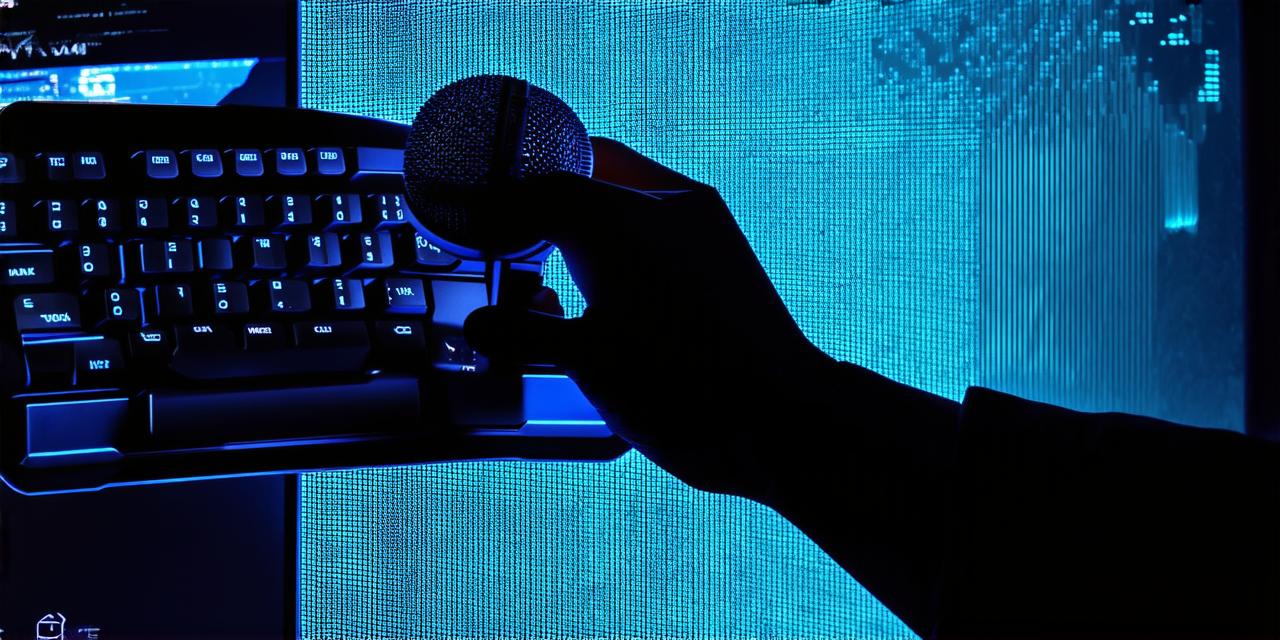
Introduction
Recording your voice for video games can be a tedious and time-consuming task, but it’s essential to make your characters sound realistic and engaging. In this article, we will provide you with step-by-step instructions on how to record your voice while playing a video game on PC. We’ll also discuss some tips and tricks for optimizing your audio quality and enhancing the overall gaming experience.
1. Choose Your Microphone Wisely
The first step in recording your voice for a video game is choosing the right microphone. There are many different types of microphones available on the market, each with its own unique features and capabilities. When selecting a microphone, it’s important to consider factors such as directional vs. omnidirectional, frequency response, and polar pattern.
Directional Microphones
Directional microphones are the most commonly used for voice recording in video games because they capture sound from a specific direction while rejecting background noise. Frequency response refers to the range of frequencies that the microphone can accurately record. A good microphone will have a wide frequency response to capture all the nuances of your voice.
Polar Patterns
Finally, polar pattern determines how much sound is captured by the microphone. There are three main polar patterns: cardioid, omnidirectional, and bidirectional. Cardioid microphones are the best choice for voice recording because they capture sound from the front and back of the mic while rejecting sound from the sides.
2. Set Up Your Recording Environment
Once you’ve chosen your microphone, it’s time to set up your recording environment. The environment in which you record your voice can greatly affect the quality of the audio. Here are some tips for setting up an optimal recording environment:
- Choose a quiet location free from background noise and reverberation.
- Position your microphone at the right distance and angle to capture your voice clearly. A good rule of thumb is to position the mic about 6-12 inches away from your mouth, depending on the size of your head and the type of microphone you’re using.
- Use pop filters or shock mounts to reduce plosive sounds such as “p” and “b” which can cause distortion in your voice. These devices help to isolate the sound source and prevent unwanted noise from entering the microphone.
- Position any reflective surfaces, such as walls or ceiling tiles, away from the microphone to avoid reverberation. This will help to create a clean and clear audio signal.
- Use a stand or bracket to keep the mic steady during recording. This will prevent any unwanted movement or vibrations that could affect the quality of your recordings.
3. Use Voice Acting Techniques
Now that you have the right equipment and environment set up, it’s time to start recording your voice. Here are some tips for using voice acting techniques to enhance the quality of your recordings:
- Use different vocal inflections and tones to convey emotion and expression in your character. For example, if you’re playing a heroic character, use a strong and confident tone. If you’re playing a villainous character, use a deep and menacing tone.
- Record your voice at different speeds and volumes to add variety and depth to your performance. This will make your character sound more natural and engaging.
- Practice different accents or dialects to make your character more unique and memorable. This will help to bring your character to life and make it stand out from other characters in the game.
- Use pauses and filler words to create natural-sounding dialogue. This will make your character sound more realistic and less scripted.
4. Edit Your Recordings
Once you’ve recorded your voice, it’s time to edit your recordings to enhance the quality of your audio. Here are some tips for editing your recordings:
- Use a digital audio workstation (DAW) such as Audacity or Pro Tools to edit your recordings. These programs have a range of tools and effects that you can use to improve your audio.
- Remove any background noise or unwanted sounds from your recordings. This will help to create a clean and clear audio signal.
- Adjust the volume levels of your recordings to ensure that they are balanced and evenly matched. This will make it easier for players to hear your voice and understand what you’re saying.
- Add any additional effects such as reverb or echo to enhance the ambiance of your recordings. These effects can help to create a more immersive gaming experience.
Conclusion
Recording your voice for video games can be a challenging task, but with the right equipment and techniques, you can create high-quality audio that brings your characters to life. By choosing the right microphone, setting up an optimal recording environment, using voice acting techniques, and editing your recordings, you can create engaging and immersive gaming experiences for players around the world.
